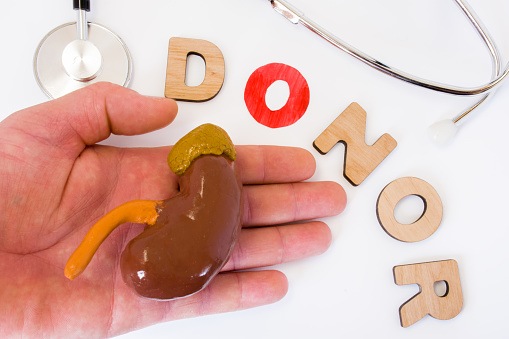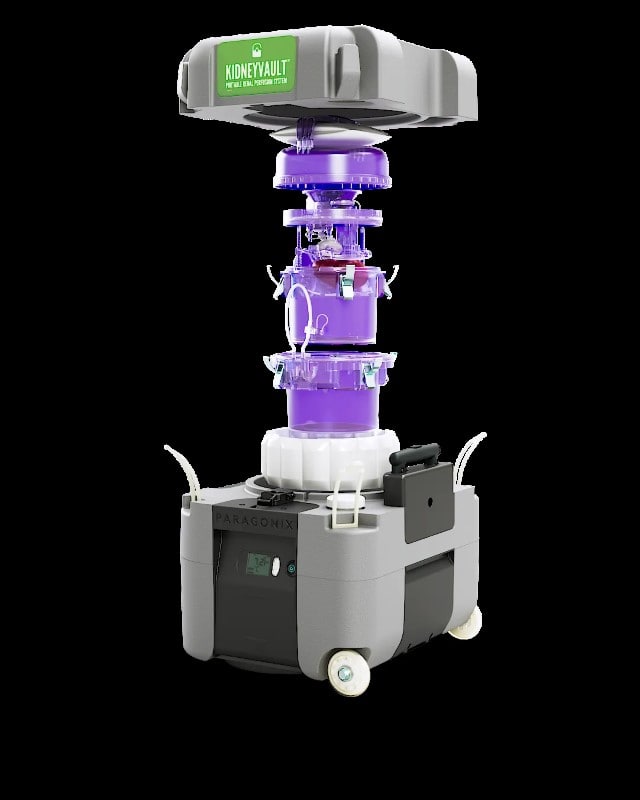
In light of the shortage of organ donors and the considerable number of patients on the waiting list for kidney transplant, a systematic review of organ acceptance practices may yield new insight into donors previously considered unsuitable. Recent examples of additions to acceptable donor profiles include kidneys from donors following cardiac arrest, as well as donors who have experienced acute kidney injury.
Toxoplasma, an intracellular protozoan parasite commonly found in humans and animals, is associated with mild and self-limited illness in immunocompetent individuals. Based on historical data indicating high mortality, particularly in recipients of heart transplant, kidney transplantation with kidneys from toxoplasma-positive donors (TPD) has been considered risky and been discouraged. In 2017, the Organ Procurement and Transplantation Network (OPTN) mandated the screening of all deceased organ donors for toxoplasma. Guidelines and final decisions regarding the use of kidneys from TPD were left to individual transplantation centers.
Lavjay Butani, MD, and Daniel Tancredi, PhD, conducted a retrospective cohort analysis comparing outcomes in recipients of TPD kidney transplantation with those who received kidneys from toxoplasma-negative donors. Results were reported online in Transplant International.
The study cohort included patients in the OPTN database who received their first deceased donor kidney-only transplant between February 28, 2018, and June 30, 2022. Pearson Chi-squared or Fisher exact tests were used to compare categorical variables in donor and recipient demographics and peritransplant characteristics among the study cohort stratified by toxoplasma IgG antibody status (positive or negative). The Kruskal Wallis test was used to compare continuous variables.
Survival analyses were used to identify the primary outcome measure of time to graft failure or death. Secondary outcomes were infection as cause of death, infection as cause of graft failure, and a composite of infection as the cause of either death or graft failure, compared with all other known causes of death.
The study population included 51,422 patients. Of those, 95.7% were adults, 59.9% were male, 34.6% self-identified as non-Hispanic White, and 34.4% self-identified as Black. The most prevalent cause of chronic kidney disease (CKD) was glomerular disease (77.3%). Anoxia was the leading cause of donor death (51.7%), followed by head trauma (29.4%). The majority of recipients were poorly matched for human leukocyte antigens (HLA; 76.8% had ≥3 HLA mismatches). Ninety percent of patients had received dialysis prior to transplantation. Of the overall cohort, 8.4% (n=4,317) of the transplants were from TPD. At one year post-transplant, the rates of delayed graft function and acute rejection were 28.5% and 4.9%, respectively.
The two cohorts were similar in most demographic and peritransplant characteristics. There was a disproportionately higher percentage of deaths in the TPD group attributed to stroke/cerebrovascular accident compared with the toxoplasma-negative group (21.6% vs 14.5%), a difference that may be explained by the known association between toxoplasma and stroke. Adult recipients were more likely to have received a TPD kidney compared with pediatric recipients (8.5% vs 5.3%; P<.0001). Men were more likely to have received a TPD kidney compared to women (8.7% vs 8.0%; P=.005). The two groups were similar in race/ethnicity and causes of CKD.
Multivariate regression analyses revealed some independent predictors of graft failure, including recipient sex (males had higher risk of failure), recipient age (the oldest three recipient age groups had the highest risk of failure compared to the youngest group), recipient ethnicity (the risk was lower among White and Hispanic recipients compared to Black recipients), receipt of pretransplant dialysis, pretransplant serum hypoalbuminemia, increasing donor age, five or more HLA mismatches, and cold ischemia time. Donor toxoplasma antibody status was not a significant predictor of graft failure.
The crude mortality rate among patients receiving kidneys from toxoplasma-negative donors was 4.93 deaths per 100 years of follow-up (95% CI, 4.76-5.09). The crude mortality rate among recipients of kidneys from TPD was 5.64 deaths per 100 years of follow-up (95% CI, 5.06-6.23). The unadjusted rate ratio was 1.14 (95% CI, 1.02-1.27; P=.02). Following adjustment using the same covariates used to model graft loss, the adjusted rate ratio was 1.02 (95% CI, 0.91-1.24; P=.73). There were no statistically significant differences between the two groups in any of the secondary outcome measures.
The researchers cited some limitations to the study findings, including restriction of analyses to recipients of deceased donor kidney transplants only and the use of antimicrobial prophylaxis in the post-transplant period. Also cited was the possibility of selection bias due to differences in transplant center policies related to selectively opting for transplant TPD organs in seropositive recipients who are at lower risk of post-transplant toxoplasmosis.
In conclusion, the authors said, “Our data confirm that transplants from TPD occur in all geographic regions of the United States and are associated with comparable graft failure rates. We do strongly advocate for ongoing donor testing for toxoplasma, testing of transplant recipients for toxoplasma, universal [trimethoprim-sulfamethoxazole] prophylaxis if either the donor or recipient is positive, and close monitoring of patients, especially after discontinuation of prophylaxis, as late-onset toxoplasma may occur.
“Based on our data, we suggest that transplant centers reevaluate their current policy on the acceptance of TDP organs in light of the recent data, and not discard such organs without considering the pros and cons of doing so, for each individual potential transplant recipient. Even if all of our recipients were toxoplasma seropositive (which is unlikely), we believe that this study adds to the literature and would be of practical value and benefit in that at least in the recipient cohort that is seropositive for toxoplasma, the use of TPD organs should not be a cause for concern.”
Source: Transplant International.






 © 2025 Mashup Media, LLC, a Formedics Property. All Rights Reserved.
© 2025 Mashup Media, LLC, a Formedics Property. All Rights Reserved.